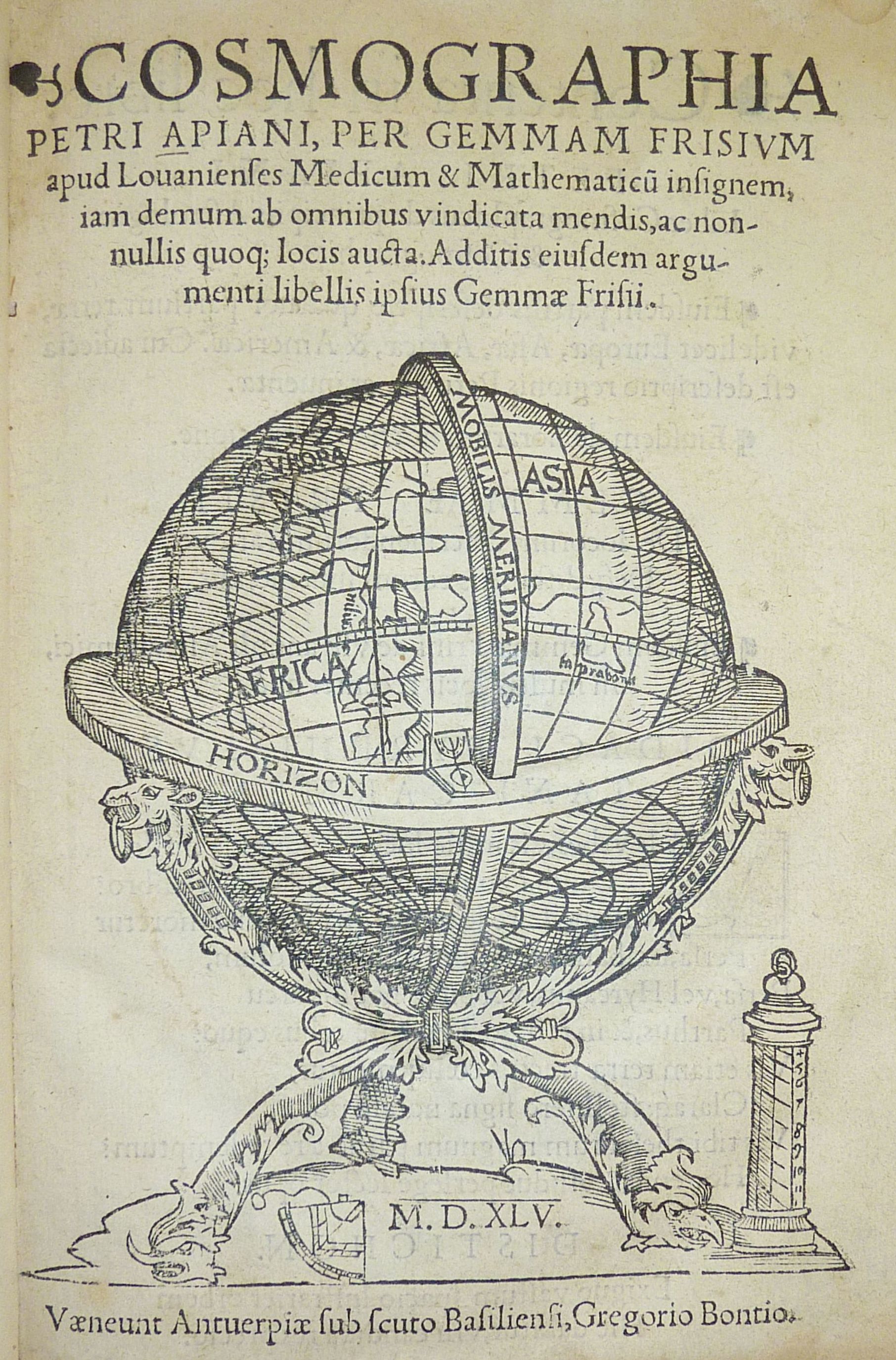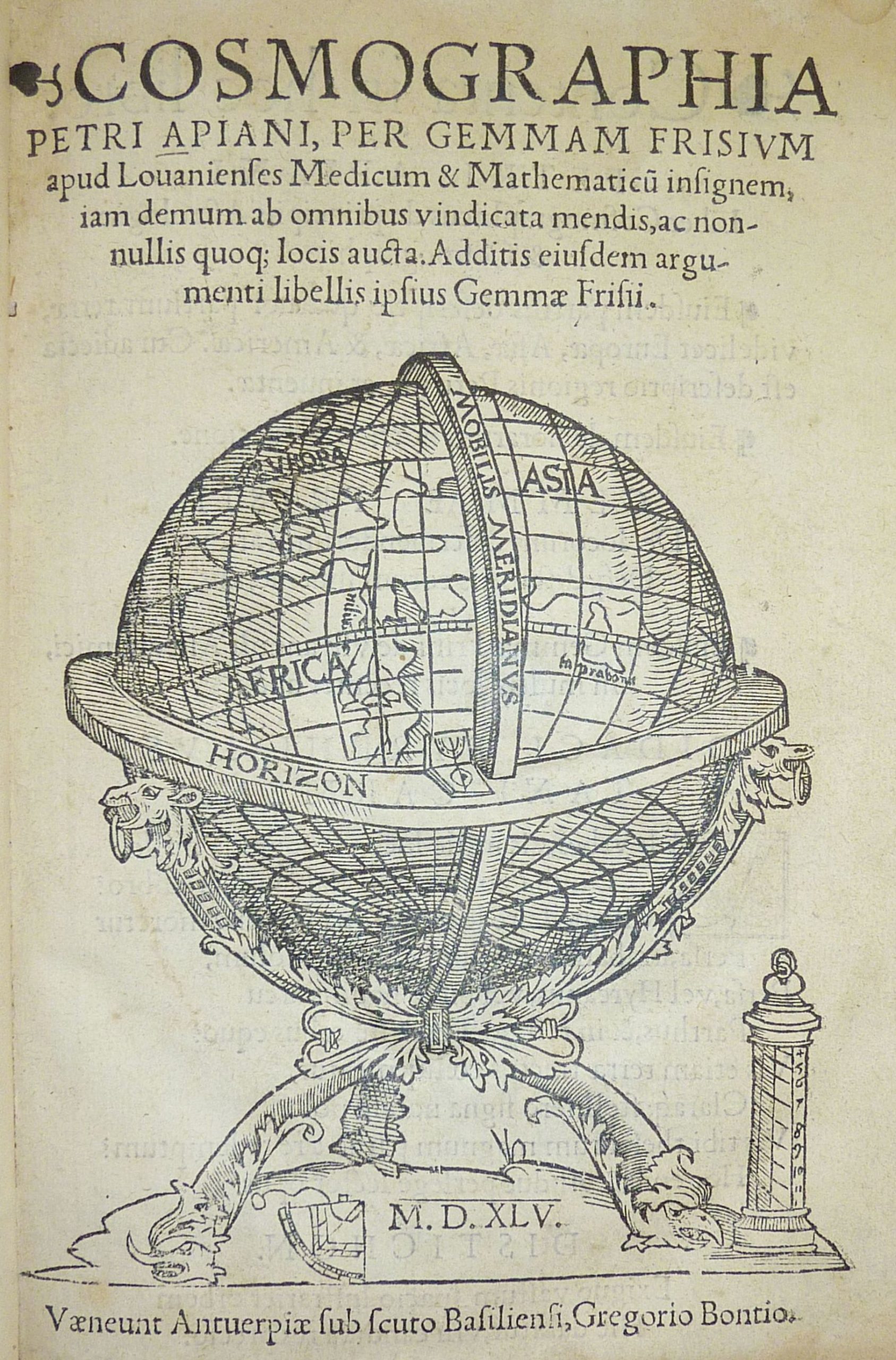
# **Cosmographia: A Renaissance Inquiry into the World and Cosmos**
## **Introduction**
The term *Cosmographia* is a fusion of the Latin *cosmos*, originating from the Greek *kosmos* (signifying world or universe), and *graphia*, from *graphos* (indicating writing or depiction). A *cosmographia* thus pertains to an exposition of the world and the cosmos. Historically, it acted as an alternative Latin nomenclature for *Geographia*, Ptolemy’s *Geographike Hyphegesis*, which translates to “guide to depicting the Earth.” This idea was vital in the Renaissance period’s cartography and scientific inquiries, with significant works like Sebastian Münster’s *Cosmographia* (1544) becoming immensely popular in sixteenth and early seventeenth-century Europe.
Throughout the Renaissance, *Cosmographia* transformed beyond mere geography to include broader interpretations of the Earth, the cosmos, and the scientific fields that explore them. A noteworthy instance of this genre is Peter Apian’s *Cosmographicus Liber* (1524), a widely circulated publication that was subsequently revised and enhanced by Gemma Frisius, who released over forty editions in five languages. Other prominent figures in this tradition include Francesco Maurolico, whose *Cosmographia* (1543) broadened the understanding of astronomical and elemental theories.
The term *Cosmographia* reached England through the release of *The Cosmographical Glasse* (1559) by William Cuningham, marking it as the first English publication on the subject. This article delves into the progression of Renaissance cosmographies and the enduring influence of these works on the studies of geography and astronomy.
—
## **The Impact of Cosmographia in Renaissance Science**
During the Renaissance, *Cosmographia* represented more than just a literary genre; it epitomized the era’s intellectual aspirations. Scientists, mathematicians, astronomers, and geographers aimed to methodically and mathematically depict the universe. These texts served dual purposes: educational and navigational, especially during an age characterized by global exploration.
### **Sebastian Münster’s Cosmographia (1544)**
Among the most celebrated Renaissance cosmographies is Sebastian Münster’s *Cosmographia*, initially released in 1544. Münster (1488–1552) was a cartographer, theologian, and scholar who integrated geographical science with historical narratives. His *Cosmographia* became one of the bestselling texts of the sixteenth century, serving as an essential reference for comprehending world geography.
Münster’s work included historical and contemporary information alongside maps, city views, and ethnographic accounts. Translated into numerous languages, *Cosmographia* played a crucial role in shaping the European worldview during that era.
### **Peter Apian’s Cosmographicus Liber (1524)**
In contrast to Münster’s focus on world mapping, Peter Apian (1495–1552) amalgamated astronomy, geography, and mathematics in his *Cosmographicus Liber* (1524). This publication, one of the century’s most pivotal scientific texts, served as a practical manual for navigation and celestial observation. It familiarized readers with vital geographical techniques such as triangulation and devised approaches for calculating latitude and longitude at sea.
Subsequently, Gemma Frisius (1508–1555) assumed the publication of *Cosmographicus Liber*, enhancing and refining it through over forty editions. Frisius’ adaptation introduced critical advancements, such as determining position using a movable clock, which would eventually influence navigational progress.
### **Francesco Maurolico’s Cosmographia (1543)**
The Sicilian mathematician and astronomer Francesco Maurolico (1494–1575) contributed to this legacy with his *Cosmographia Francisci Maurolyci Messanensis Siculi in tres dialogos distincta* (1543). Structured in dialogical format, this text encompassed celestial and terrestrial sciences, exploring the quantity, shape, and movement of heavenly bodies while discussing the Earth’s structure. Maurolico’s contributions left a significant mark on later Renaissance cartographers and cosmographers.
—
## **The First English Cosmographia: William Cuningham’s *The Cosmographical Glasse* (1559)**
Before examining William Cuningham’s contributions, it is notable to highlight the role of John Daye, the publisher of the book. Daye was a key Protestant printer who, even under Queen Mary I’s Catholic dominance, continued to print Protestant literature. His allegiance to Elizabeth I following her rise allowed him to revive his publishing business, enabling the release of Cuningham’s *The Cosmographical Glasse* in 1559.
### **Who Was William Cuningham?**
Limited information exists regarding William Cuningham (1531
